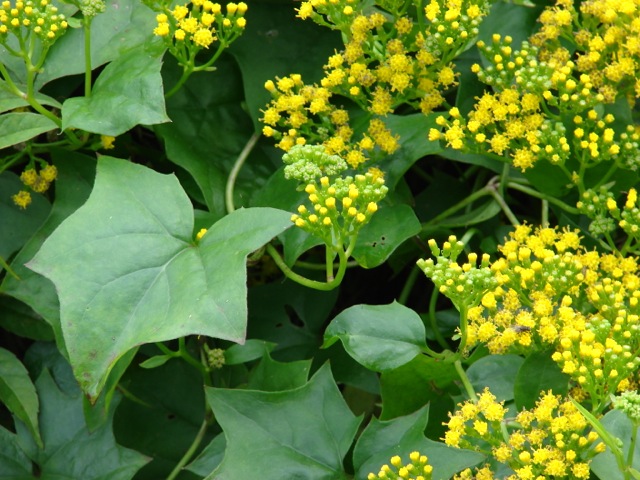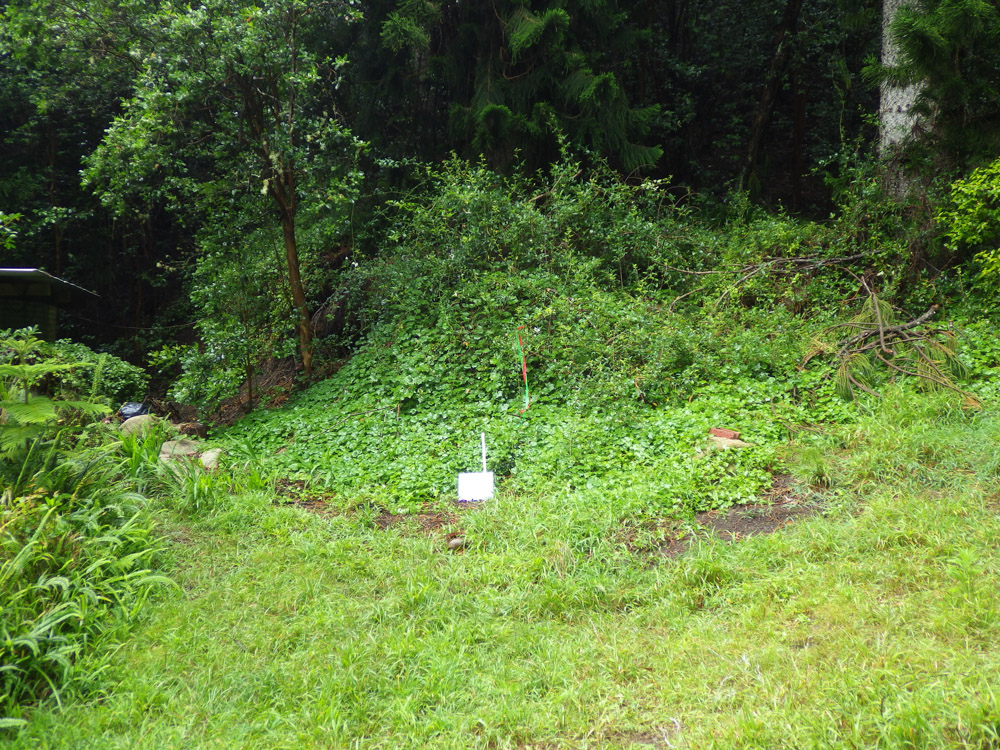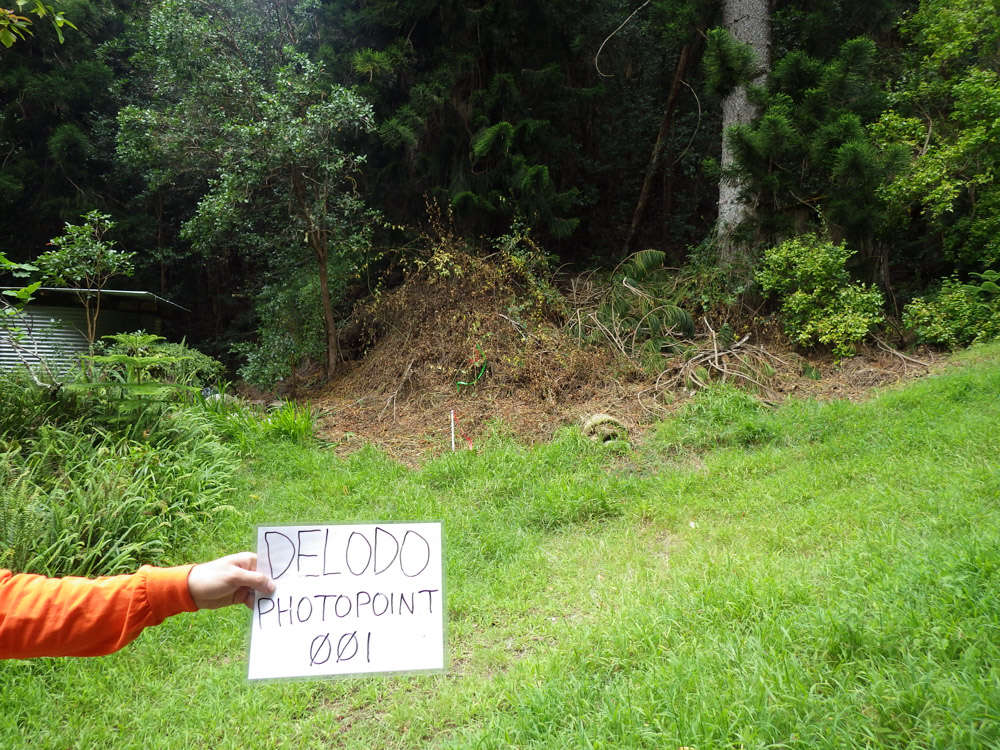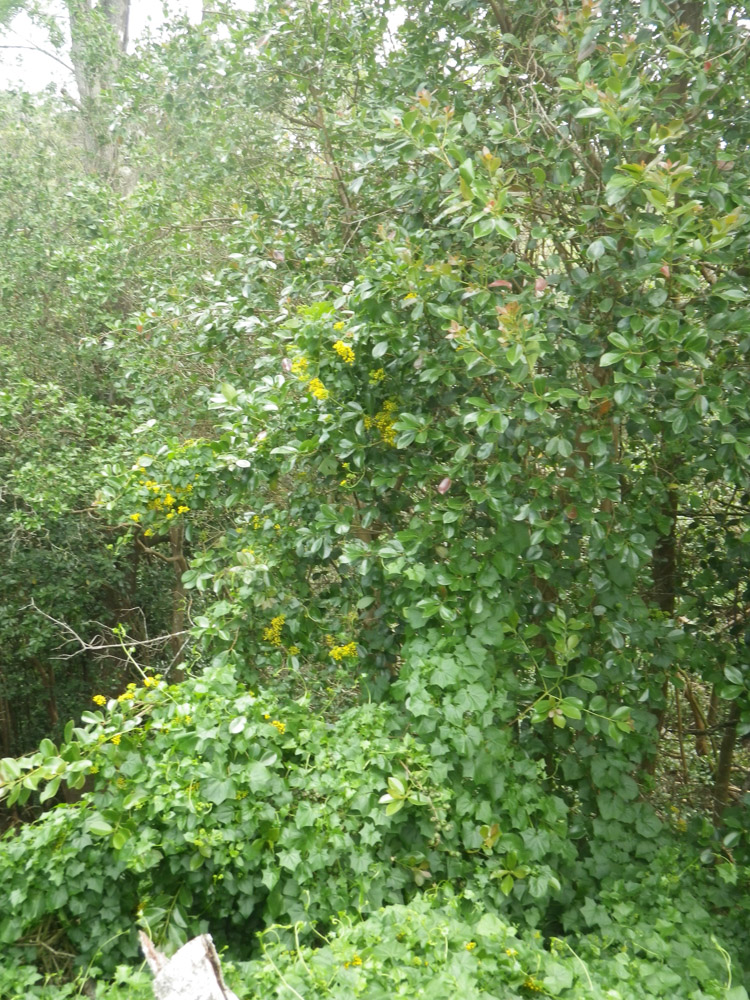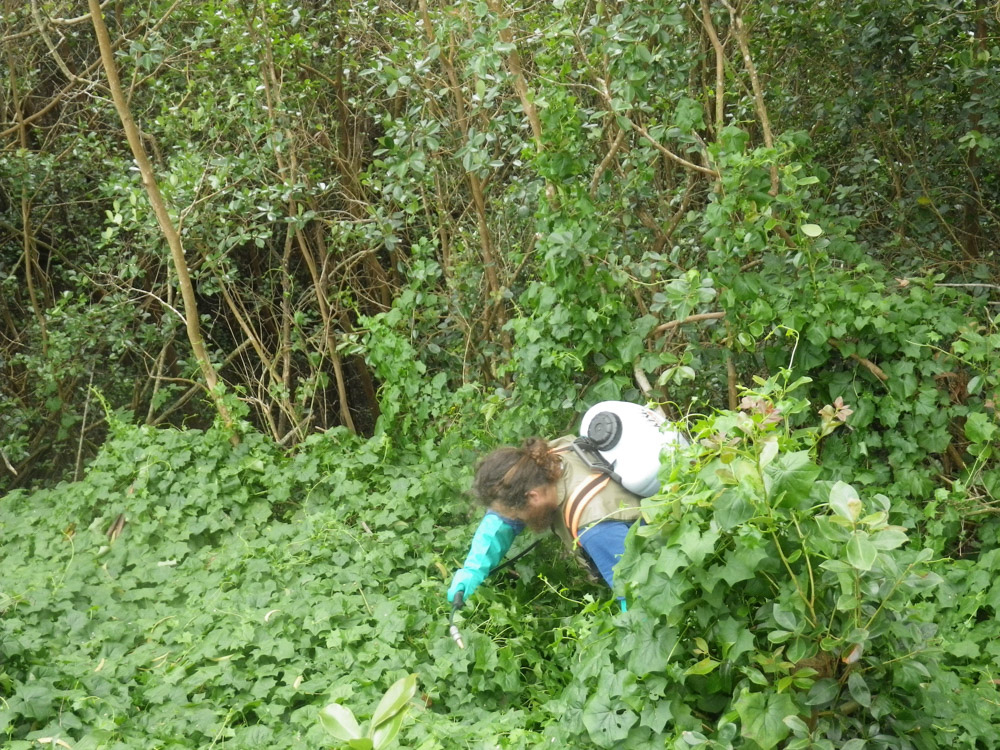Do NOT pull or cut down the plant. OISC will properly remove and dispose of the plant to prevent spreading seeds and re-sprouting. Please report cape ivy to OISC. Please send photo and location to oisc@hawaii.edu or text 808-286-4616. You can also call our office at 266-7994.
Cape ivy (Delairea odorata)
Family: Asteraceae
Cape ivy is considered a noxious weed in New Zealand. California has it listed as an A-1 invasive plant (most invasive wild land pest plant) on their exotic pest plant list. Cape ivy is widely cultivated as an ornamental ground cover on the continental United States and is thought to have been introduced to Hawai’i Island in the early 1900s. It has become a widespread weed on Hawai‘i Island and Maui, and is present on Lana’i.
Description:
- Vine with a woody stem.
- Leaves have 3-10 lobes (projections, similar to a blade, on the leaf) with palmate (hand shaped) veins and softly hairy undersides that grow on purplish stems.
- Flowers in dense clusters with many small, bright yellow flowers that bloom in the winter.
- Fruit is about 2 mm long (.75 inch), often with a pappus, which is a “crown of hairs” similar to dandelion seeds.
- Native to South Africa.
Harm:
- Cape ivy is an aggressive and hearty grower that can thrive in both dry and wet conditions and to elevations of over 7,000 feet.
- Capable of rapid growth rates in both disturbed and native ecosystems.
- Produces thousands of seeds that are easily dispersed by wind or water.
- Spreads vegetatively, a section as small as an inch long can re-root in a new area.
- Forms impenetrable mats crowding out native vegetation.
- Plant is toxic (contains pyrrolizidine alkaloids); potentially toxic to aquatic organisms and humans.
On O’ahu:
- Cape ivy is present in the Pālehua area of the Wai’anae Mountains and on Tantalus in the Makiki/Mānoa area.
- OISC’s management goal for cape ivy is island-wide detection and eradication.
- Early detection and reporting are essential. Please call OISC at 286-4616 or email oisc@hawaii.edu to report cape ivy.
